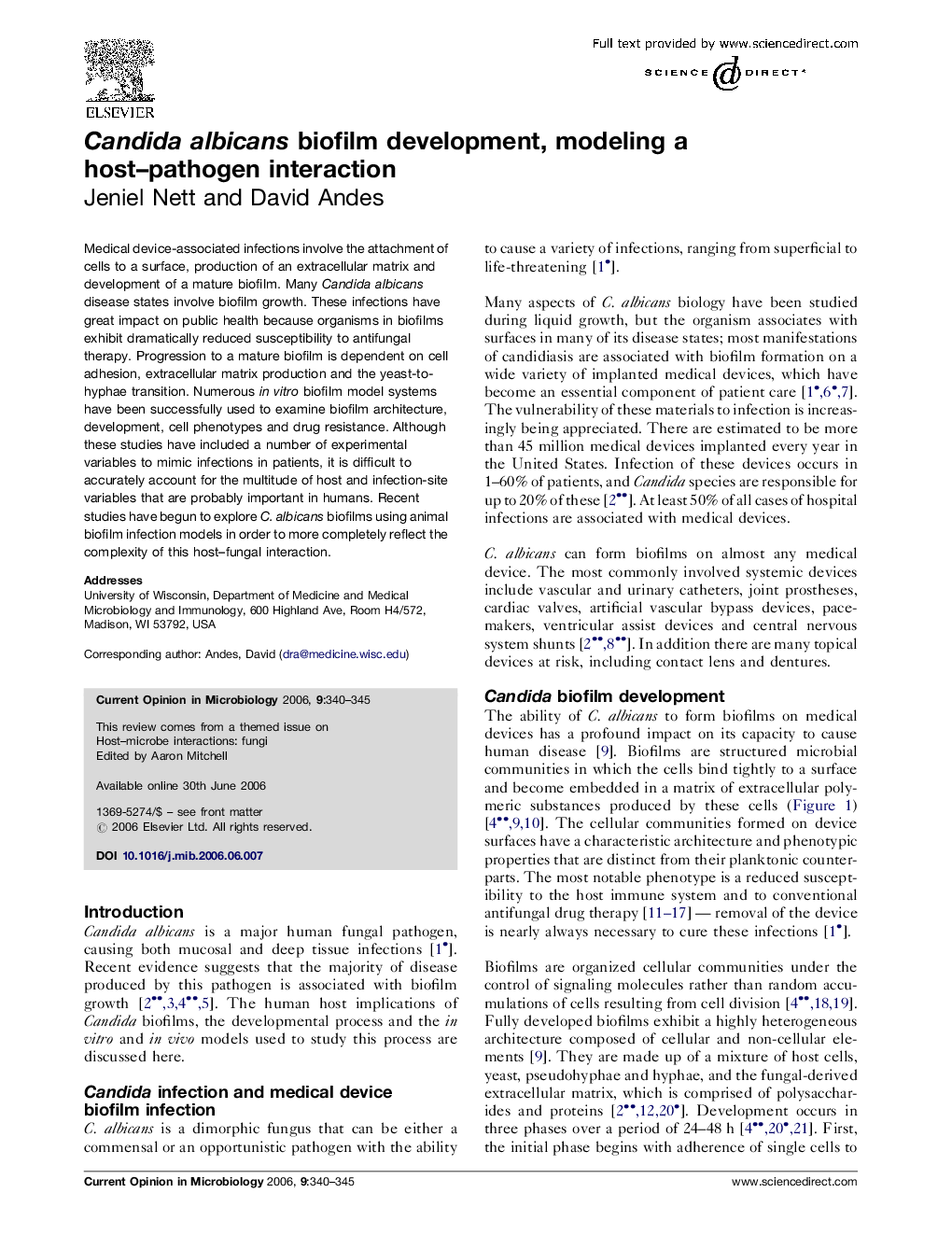| Article ID | Journal | Published Year | Pages | File Type |
|---|---|---|---|---|
| 3399711 | Current Opinion in Microbiology | 2006 | 6 Pages |
Medical device-associated infections involve the attachment of cells to a surface, production of an extracellular matrix and development of a mature biofilm. Many Candida albicans disease states involve biofilm growth. These infections have great impact on public health because organisms in biofilms exhibit dramatically reduced susceptibility to antifungal therapy. Progression to a mature biofilm is dependent on cell adhesion, extracellular matrix production and the yeast-to-hyphae transition. Numerous in vitro biofilm model systems have been successfully used to examine biofilm architecture, development, cell phenotypes and drug resistance. Although these studies have included a number of experimental variables to mimic infections in patients, it is difficult to accurately account for the multitude of host and infection-site variables that are probably important in humans. Recent studies have begun to explore C. albicans biofilms using animal biofilm infection models in order to more completely reflect the complexity of this host–fungal interaction.
